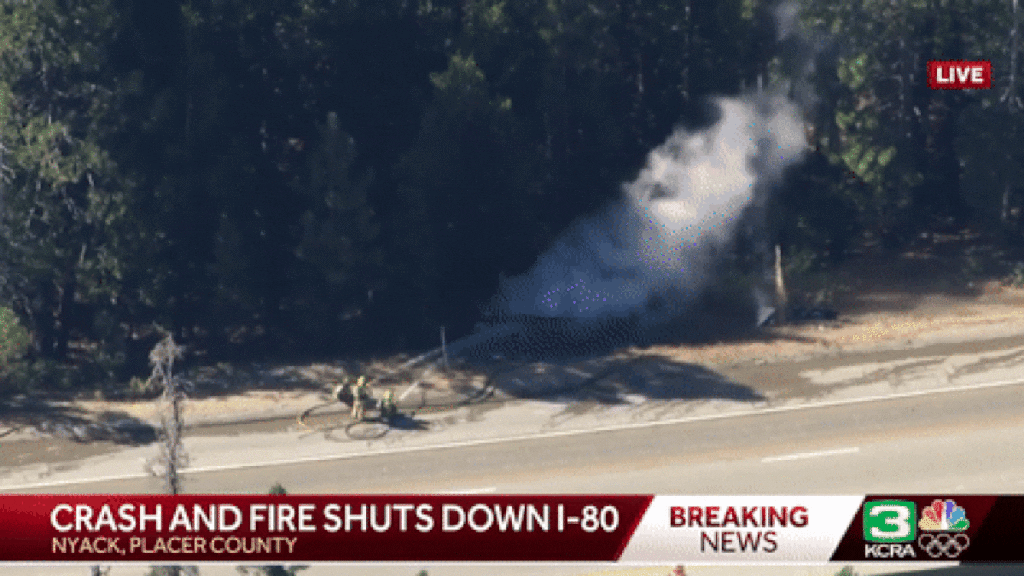Tesla Semi Battery Pack Bursts Into Flames And Spews Toxic Fumes After Crash

A Tesla Semi truck has crashed in California causing its battery pack to burst into flames and spew toxic fumes over I-80. First responders in the area closed the highway in both directions as they waited for the truck to burn out.
Tesla’s Cybertruck Has Finally Arrived
The Tesla truck was driving in northern California on Monday when it crashed off the interstate near Nyack Road in Placer County, reports the Los Angeles Times. The truck crashed off the road and into trees on the right shoulder, which sparked a fire in the vehicle’s battery pack. The pack reportedly burned at more than 1,000 degrees and filled the air with toxic fumes, forcing the closure of I-80 in both directions.
Firefighters responding to the scene attempted to put out the fire but were forced to leave the truck’s remains burning “into the late afternoon,” reports the LA Times. Despite initially crashing off the road at around 3am on Monday morning, it wasn’t until past 7pm last night that the road was finally cleared and the interstate could reopen.
The delays in cleaning up from the fire stem from the Tesla Semi’s enormous power pack, reports CBS News. The electric trucks make use of a battery pack that’s about ten times the size of the battery used in Tesla’s Model S sedan. All that power is enough to mean that the Tesla Semi is capable of covering more than 1,000 miles over a working day with just a few brief charges and a load of around 70,000 pounds.
Interstate 80 shut down in the Sierra after Tesla big rig crash, fire
However, that massive battery pack also means that there is an enormous amount of flammable material onboard every truck, as CBS News explained:
Dylan Khoo is an electric vehicle industry analyst and said the battery in the semi is at least 10 times the size of one in a Tesla Model 1 or 3.
“That battery is going to release a lot more toxic gases. It’s going to burn a lot longer. It’s generally a lot harder to put out,” Khoo said.
He said the general procedure is to let it burn out by itself, which can take quite a bit of time with a battery that size. Khoo added that you can’t just use water to put it out.
“The water that you use to put it out is going to collect toxic chemicals. You’ll create sulfuric acid, hydrochloric acid,” Khoo said.
The crash and subsequent fire is the first such incident involving a Tesla Semi, which was finally launched by the American EV maker in 2023 and so far has been delivered to companies like PepsiCo.
Crashes such as this are a stark reminder that many fire services across America still don’t quite know how to respond to electric vehicle fires. In the past, agencies have resorted to dumping flaming EVs into water and dousing them with thousands of gallons of water to try and fight the blaze.



